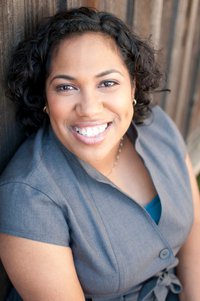
|
Reader: I’m expecting a lump sum of money. I would like to pay down my credit card debt with the money. I have several credit cards with balances ranging from $50 to $3,000. What is the best way to do this? I would like to reduce the number of payments I make each month in addition to reducing the amount of money I owe.
First of all, congratulations on coming into a tidy sum. I’m glad you’re being proactive in paying down your debt with your windfall. To know what to do, you have to know what you’re working with.
Make a list of all your debt. There should be a column for the name of the company, the amount of debt, the interest rate, and any notes about the debt. You can find a great debt worksheet in my book Money Matters: The Get It Done in 1 Minute Workbook. After you have filled in all the columns relating to the debt, you’ll have to decide which strategy you’d like to use to pay down the debt.
Choose a strategy. There are two basic ways that most people decide which debt to pay off first:
• Pay by interest rate – Once you have all your debt listed on the chart take a look and see which interest rate is the highest and write a number one near it. Find the second and write a number two. Continue numerically ordering them until you have them all in order from highest interest rate to lowest interest rate. You’re going to continue paying the minimum balance on all your accounts; however you’re going to start paying a little extra on the account with the highest interest rate to help pay it off faster. Once the highest interest rate is paid off you’re going to apply all the money that you would have paid (minimum balance plus the extra bit) towards the debt with the second highest interest rate while continuing to pay the minimum on all the other accounts. Once that one is paid off you’ll move on to the third account. People like this method because it helps to cut down on the overall amount of interest you’ll pay back over the lifetime of the loan and it creates a snowball effect that helps get debt paid off quickly.
• Pay by debt amount – Once you have all your debt listed on the chart, take a look and see which is the smallest amount. Write a number one near it. Find the second lowest amount and write a number two near it. Continue until each debt is in numerical order from lowest amount to highest amount. You’re going to continue paying the minimum balance on all your accounts. However, you’re going to start paying a little bit extra on the account with the lowest amount of debt. Once the smallest amount is paid off you’re going to apply the payments you would have made (minimum balance plus the extra bit) to the debt with the next highest amount. Continue this strategy until all debts are paid off. People like this strategy because it feels like you’re accomplishing the goal of paying off debts more quickly and it creates a snowball effect that helps debt get paid off quickly.
Since you mentioned that you would also like to reduce the number of payments required each month I’m going to suggest that you use the second payment strategy and pay off debt by amount owed. Once you have everything listed, use as much of your windfall as you can to pay off the smaller outstanding debts. With those smaller debts gone you’ll be able to focus your payments on the remaining debt and your credit score might increase due to your debt ratio being lowered.
Want your personal finance question answered? Ask it! Email your questions to [email protected]. I look forward to working together to build the knowledge, and net worth, of South LA residents.
About Shay:
Shay Olivarria is a financial education speaker and the author of three books on personal finance. She has written articles for Bankrate.com, FoxBusiness.com and The Credit Union Times, among others. Visit her at www.BiggerThanYourBlock.com.














